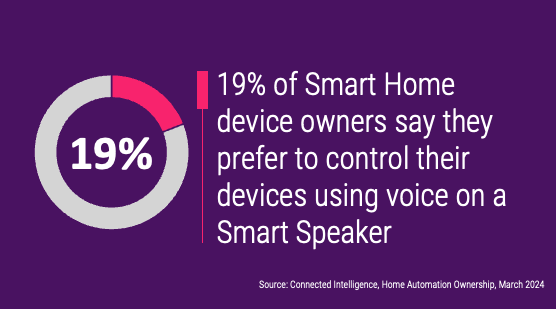
CSA Releases Matter 1.3
Last month the Connectivity Standards Alliance released the third update to the Matter specification. Matter 1.3 brings support for appliances, such as ovens and cooktops, while adding water and energy management devices. Additionally Matter 1.3 brings a new feature, Matter universal casting protocol, that could potentially compete with other ecosystem casting applications such as AirPlay and Google Cast. Though popular Security Cameras and Smart Doorbells are not yet supported by Matter, most smart appliance categories are now able to integrate the specification.
The Circana Take:
- The addition of smart appliances is promising news for the development of Matter, although ownership (and usage) of smart appliances remains small. Details on how Matter’s casting feature will work are scant, but the feature has the potential to improve content sharing in the home- especially as consumers add multiple brands and services.
Open Source Platform Offers Voice
Home Assistant, a free, open source home automation platform is favored among smart home enthusiasts who enjoy complete control over how their devices and applications operate. Last week, the platform announced Home Assistant Core 2024.6 allowing its voice assistant (aptly named Assist) to control compatible smart devices using a LLM (large language model) such as those offered by OpenAI and Google. While this will enable automations such as ‘turn on the lights’ when connected to a smart lighting system, more ambiguous commands such as “It’s dark in here can you fix that?” are also possible. Beyond using natural language prompts, the LLM powered Assist application can understand intent and solve problems.
The Circana Take:
- While this capability will initially be utilized by DIY enthusiasts, this innovation shows the impact more advanced AI systems can have on voice assistants and the smart home. As users get more accustomed to using their voices to control their home devices, basic command interactions could get clunky for users- and perhaps decrease engagement with the applications and devices.
- Speaking to a voice assistant and controlling devices in a more natural way – the way someone might speak to another person – will make these applications more usable and appropriate for more systems throughout the home.


